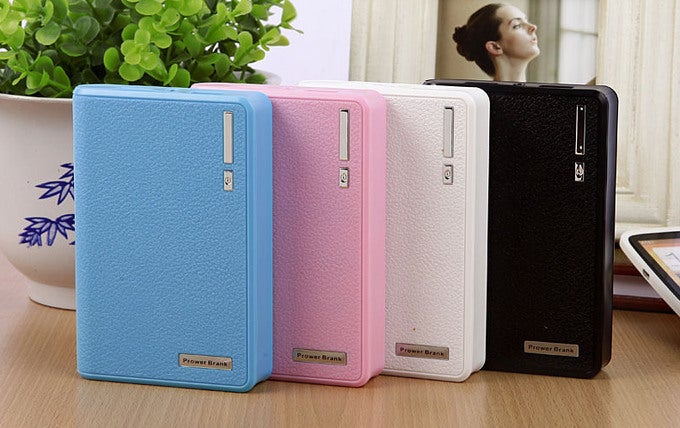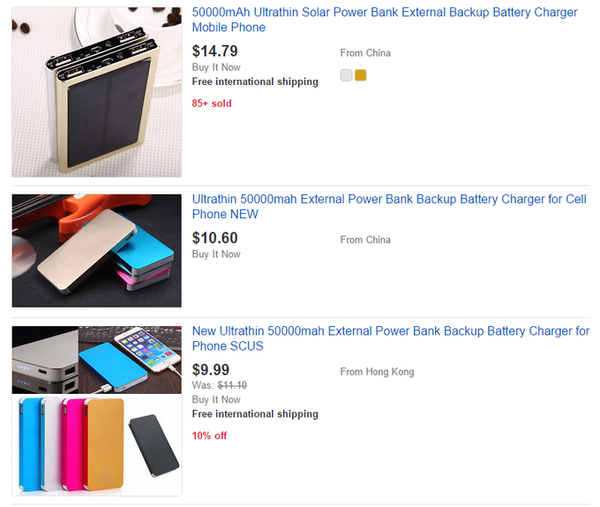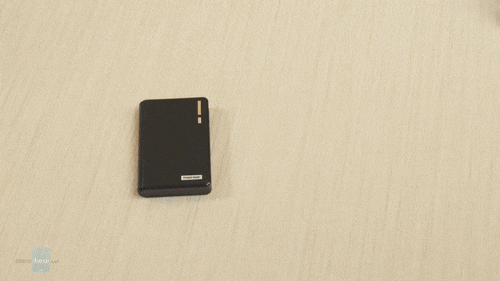Fake capacity power banks exposed, or why you should buy genuine accessories

How to spot a fake power bank?
Well, using common sense should do the trick. Most power banks hold between 2,000 and 10,000 milliamp-hours (mAh) of charge – the higher the capacity, the larger the physical size of the accessory. The largest models on the market do reach capacities over 20,000mAh, but they're a rare sight among average consumers due to their size, weight, and price.
Go to eBay, however, and you may come across power banks that supposedly pack 50,000 to 100,000 mAh of charge – an astonishingly large amount – but usually cost next to nothing. These are the fakes you should stay away from. Sure, they almost certainly will work as a power bank, but their actual capacity is guaranteed to be less than what the listing wants you to believe. In fact, if a power bank could really store 100,000 mAh of charge, it would be large enough to require a backpack to be carried around.

Certainly not 50,000mAh power banks
We're not saying that every single power bank that offers lots of charge for little money is a fake. Indeed, there are some good value-for-money offerings, such as the 10,000mAh power bank from OnePlus costing $19, or the 20,000mAh one from Aukey priced at $25 on Amazon. But if a deal seems too good to be true, then it could really be a scam. Do your research before making a purchase.
How bad are those fake power banks anyway?
To answer this question, we spent some $10 on one of those suspicious no-name power banks. (So you don't have to!) Our unit was supposedly capable of storing 20,000mAh of charge, which was quite a lot – about enough to provide an iPhone 6s with 10 full charges. However, the accessory could barely recharge an iPhone 6s twice before it ran completely out of juice. Clearly, the thing's actual capacity was much less than the advertised 20,000mAh, so we cracked it open to see what was really going on under the hood.

Honestly, the internals of the accessory didn't look as bad as we expected them to. Inside we found four lithium battery cells (type 18650, a popular standard) and a circuit board to control the charging process. The cells, however, looked fishy. The most alarming thing about them was the complete lack of labeling: neither their manufacturer, nor their voltage and capacity were stated. We could only assume that they were either old or of low quality, based on our experience with the accessory. In any case, four genuine, high-quality cells of this type should easily hold enough energy to recharge an iPhone 6s at least four times, but can never provide the advertised 20,000mAh capacity.
Conclusion: are fake capacity power banks worth it?
To summarize, fake capacity power banks are looking like a bad deal. The only "good" thing about them is that they cost very little money – between $10 and $20 in most cases, depending on the model. And yes, they seem to work. But as the saying goes, you do get what you pay for, and what you're most likely going to get is a bunch of lies – a bank that can hold very little charge for its size, made with lithium cells of dubious quality. If you're looking for a power bank, our advice is to go for one made by a brand name you can trust. Sure, it might cost a bit more than the fakes, but it is much more likely to give you the performance and features that its manufacturer is promising.
Follow us on Google News













Things that are NOT allowed:
To help keep our community safe and free from spam, we apply temporary limits to newly created accounts: